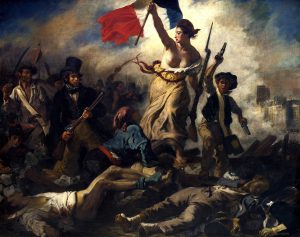1776 American History is about Declaration of Independence.
American Colonial Life (1607-1776), the way of life in the 13 colonies that became the United States. Most of the original settlers were English. In the region between New England and Virginia, however, were early colonists of two other nationalities-the Dutch in New York, and the Swedes along the Delaware River.

Each nationality brought its own way of living-styles of architecture and clothing, types of food, agricultural methods, and social activities. All, however, learned many useful things from the Indians-especially about native foods-as well as from each other.
After being driven out of New York by the British and forced to retreat to the West bank of the Delaware during the late summer of 1776, the American cause was at low ebb. In the harsh winter, Washington was faced with the annual crisis of the expiry of the Continental Army’s period of enlistment. He resolved to attack the Hessian position at Trenton on the extreme southern end of the overextended British line along the Delaware before his army dispersed.
After French and Indian War
The French and Indian War changed the balance of power in North America in favor of the British. The French were driven out by a coalition of Britons, colonists, and Indians. However, once peace returned, these groups began to quarrel, and the situation in North America became more fragile every day. The colonists and the British held deep resentment toward each other following the war, stemming most particularly from the poor relations between British and colonial troops.
1776 American History: Declaration of Independence
On 4th July in 1776, in Philadelphia, Pennsylvania, the Continental Congress adopts the Declaration of Independence, which proclaims the independence of a new United States of America from Great Britain and its king. The declaration came 442 days after the first shots of the American Revolution were fired at Lexington and Concord in Massachusetts and marked an ideological expansion of the conflict that would eventually involve France’s intervention on behalf of the Americans.
On July 4, the declaration was formally adopted by 12 colonies after minor revision. New York, the 13th colony, approved it on July 19. On August 2, the declaration was signed. The American War for Independence would last for five years. Yet to come were the Patriot triumphs at Saratoga, the bitter winter at Valley Forge, the intervention of the French and the final victory at Yorktown in 1781. In 1783, with the signing of the Treaty of Paris with Britain, the United States formally became a free and independent nation.
The political philosophy of the Declaration was not new; its ideals of individual liberty had already been expressed by John Locke and the Continental philosophers. What Jefferson did was to summarize this philosophy in “self-evident truths” and set forth a list of grievances against the King in order to justify before the world the breaking of ties between the colonies and the mother country.
